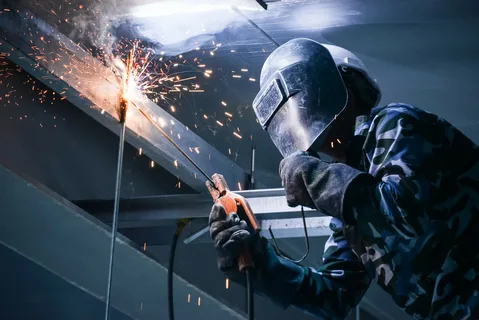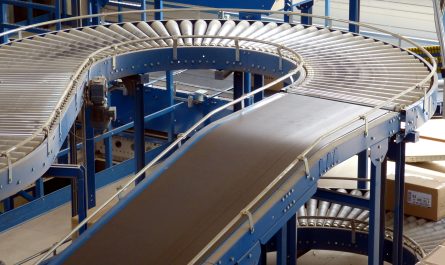Welding is a fabrication process that joins materials, usually metals or thermoplastics, by causing coalescence. This is often done by melting the workpieces and adding a filler material to form a pool of molten material (the weld pool) that cools to become a strong joint, with pressure sometimes used in conjunction with heat, or by itself, to produce the weld.
Types of Welding Equipment
There are several types of welding processes that require different welding equipment:
Shielded Metal Arc Welding (SMAW)
Shielded metal arc welding, also known as manual metal arc welding or stick welding, uses an arc struck between the base material and a consumable electrode rod coated in flux. The Welding Equipment needed for SMAW includes a welding power supply, electrode holder, work clamps, and electrode rods. Protection from the arc flash is provided by a welding helmet and protective clothing. Operators must maintain a short gap between the tip of the electrode and the base material to maintain an arc.
Gas Metal Arc Welding (GMAW)
Gas metal arc welding, often referred to as MIG welding, uses a continuous wire feeding gun to feed welding wire to an electric arc formed between the wire and the base material. The equipment needed includes a welding power supply, MIG torch (gas-shielded welding gun), gas supply unit, work clamps, and welding wire spool. A gas mixture like CO2 or argon protects the weld area from oxidation and contamination. An operator guides the torch along the weld seam.
Flux-Cored Arc Welding (FCAW)
Flux-cored arc welding is based on the GMAW process but uses a specialized self-shielding welding wire that contains a powdered flux around the wire core. Some of the advantages of FCAW over SMAW include higher welding speeds and less spatter. Basic equipment includes a welding power supply, flux-cored welding gun, work clamps, and welding wire spool.
Gas Tungsten Arc Welding (GTAW)
Gas tungsten arc welding, also called tungsten inert gas (TIG) welding, uses a non-consumable tungsten electrode, along with a separate welding rod and an inert shielding gas (argon or helium). Welding Equipment includes a TIG welding torch, welding power supply, gas supply unit, and work clamps. It is well-suited for welding thin materials and difficult-to-weld alloys. Precise control over the weld is possible due to the stable arc.
Oxy-Fuel Welding and Cutting
Oxy-fuel welding and cutting, also called oxyfuel welding, uses a fuel gas and oxygen to produce a cutting flame. The equipment includes fuel and oxygen gas cylinders, regulators, hoses, and torch assemblies. It can be used for welding, brazing, heating and flame cutting of steel and other metals. Pre-mixed fuel gases like acetylene or propane are commonly used.
Resistance Welding
Resistance welding relies on heat generated by resistance to current flow at the weld interface of the materials being joined. The main types are spot welding, projection welding, and seam welding. Equipment includes heavy-duty welding transformers, welding electrodes or tip assemblies, welding controllers, and clamps or jigs. No filler material is required since the heat is generated between the base materials.
Safety Equipment for Welding
Protecting the welder from harmful ultraviolet light, flying sparks, molten metal, smoke, and electric shock is critical. Safety equipment includes heavy leather gloves and sleeves, a welding helmet with appropriate filter shade, protective clothing such as a flame resistant jacket and pants, and protective footwear and head protection. Respiratory protection may also be needed. Additional safety precautions include fire extinguishers, workplace ventilation, and protective screens or curtains. Since welding creates an electric arc, ensuring proper grounding of equipment and short circuit protection are essential for working safely.
Welding involves joining materials through the application of heat and/or pressure. Common Welding Equipment each require different types of welding equipment, ranging from simple manual welding to partly automated or robotic systems. Selecting the appropriate welding equipment based on the material, joint design, and production needs is important. Equally important is the proper use and maintenance of equipment along with necessary safety precautions to protect welders from hazards involved in these industrial processes. Welding remains an indispensable joining technique across many industries from shipbuilding to automotive to infrastructure and more. Advances in welding equipment continue to be made to support all areas of modern manufacturing.
*Note:
1. Source: Coherent Market Insights, Public sources, Desk research
2. We have leveraged AI tools to mine information and compile it



